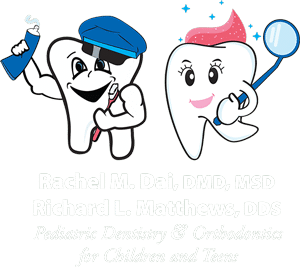Legacy Orthodontics - Questions
The 20-Second Trick For Legacy Orthodontics
Table of ContentsSome Known Details About Legacy Orthodontics The Legacy Orthodontics IdeasAn Unbiased View of Legacy OrthodonticsSome Known Incorrect Statements About Legacy Orthodontics Not known Facts About Legacy Orthodontics
In enhancement, we offer flexible treatment timetables, flexible payment options and a fun, pleasurable experience.An orthodontist is a dental practitioner trained to diagnose, protect against, and treat teeth and jaw irregularities. Orthodontists function with people of all ages, from children to adults.
Malocclusion, or misaligned teeth, can bring about dental concerns, including tooth degeneration, gum condition, and hard or uncomfortable chewing. Not everyone is birthed with straight teeth. If you have a poor bite or huge rooms between your teeth, you may wish to get in touch with a dental expert specializing in orthodontic treatment.
Facts About Legacy Orthodontics Uncovered
( Image Credit History: DigitalVision/Getty Images) Orthodontists make use of taken care of and removable dental tools, like braces, retainers, and bands, to change the setting of teeth in your mouth. Orthodontic therapy is for oral abnormalities, consisting of: Uneven teethBite issues, like an overbite or an underbiteCrowded teeth or teeth that are as well much apartJaw misalignmentThe objective of orthodontic treatment is to boost your bite.
A healthy bite guarantees you can eat, eat, and speak appropriately. While you might think about orthodontists as mostly for children or young adults who require dental braces, they can correct dental issues at any type of age. Orthodontists participate in college, dental institution, and orthodontic institution. After graduation, they spend 2 or 3 years in an orthodontic residency program.
, but not all dentists are orthodontists. They focus on two areas: Exactly how to properly and safely relocate teeth How to correctly direct development in the teeth, jaw, and faceOnce an orthodontist has actually completed training, they have the option to end up being board licensed.
The Ultimate Guide To Legacy Orthodontics
Malocclusion leads to tooth congestion, a misshapen jaw, or uneven bite patterns. Malocclusion is usually treated with: Your orthodontist affixes steel, ceramic, or plastic square bonds to your teeth.
If you have just small malocclusion, you may be able to make use of clear dental braces, called aligners, rather than typical dental braces (https://padlet.com/brianmccune20176/legacy-orthodontics-oaq8ob5ieez4famy). Some individuals need a headgear to help move teeth right into line with stress from outside the mouth. After braces or aligners, you'll require to put on a retainer. A retainer is a customized tool that maintains your teeth in place.
They're most commonly used on youngsters. They can create additional space in the mouth without having to draw teeth. If you have a serious underbite or overbite, you might need orthognathic surgical procedure (also called orthodontic surgical procedure) to lengthen or reduce your jaw. Orthodontists use cords, medical screws, or plates to sustain your jaw bone.
You might need to see an orthodontist if you have: Crowding or not enough area for all of your teethOverbite, when your upper teeth come by your bottom teethUnderbite, when your bottom teeth are too much forwardSpacing or concerns with gapsCrossbite, which is when your upper teeth fit behind your bottom teeth when your mouth is closedOpen bite or a vertical void in between your front base and upper teethMisplaced midline, when the facility of your base and upper teeth do not align Correcting a dental malocclusion can: Make biting, chewing, and speaking easierImprove the symmetry of our face and your overall appearanceEase pain from temporomandibular joint problemsDifferent your teeth and make them less complicated to clean, aiding protect against dental cavity or tooth cavities It's typically a dental professional who initially notices misaligned teeth during a regular exam.
Things about Legacy Orthodontics

Throughout your initial orthodontic examination, you'll likely have: A dental examPhotos taken of your face and smileDental X-raysPanoramic (360 level) X-rays of your face and headImpressions to produce molds of your teethThese examinations will assist your orthodontist recognize exactly how to wage your therapy. clear braces. An orthodontist is a dental expert who's had training to treat your teeth and jaw
An orthodontist is focused on your bite, so something like a broken tooth would be managed by a dentist. Orthodontists are focused on your bite, or the way your teeth fit together, and the straightness of your teeth.
Ever before wondered just how celebrities always appear to have completely straightened teeth? The answer often hinges on the skilled hands of an orthodontist. What specifically does an orthodontist do? Orthodontists are oral specialists that concentrate on correcting abnormalities in the teeth and jaws. Their know-how exceeds simply developing a beautiful smile; it includes enhancing your general dental wellness and function.
What Does Legacy Orthodontics Do?

While this braces are one of the most typically recognized orthodontic treatment, orthodontists have a varied toolkit at their disposal. The particular approach selected relies on the severity of the situation, the client's age, and private preferences. These reliable braces make use of a system of brackets bound to the teeth and attached by cables.
Clear aligners, like Invisalign, are a preferred alternative for clients seeking a much more very discreet therapy alternative. These detachable trays are personalized to progressively change the teeth's position. Headgear may be used combined with braces or aligners to use additional targeted forces, especially for dealing with jaw discrepancies. In situations of narrow jaws, palatal expanders can be used to develop space for proper tooth alignment.